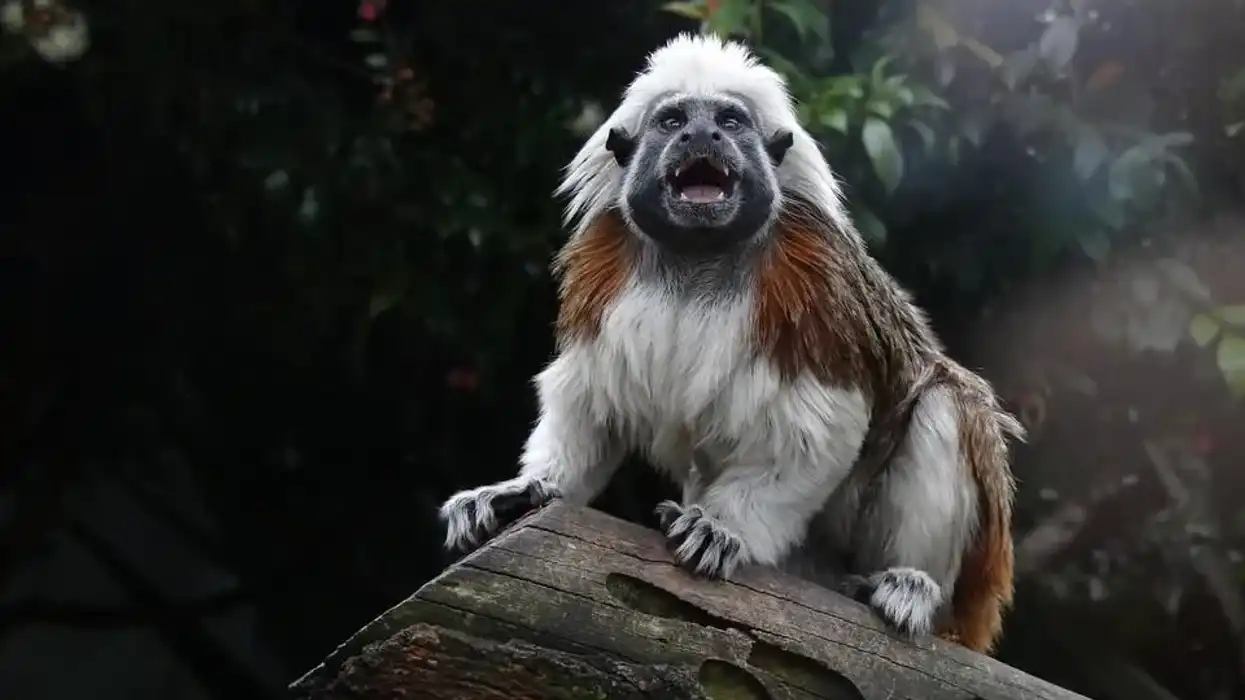The Tres Marias raccoon is a medium-sized wild species, but in some regions, they enter the urban areas due to various reasons like habitat loss, food scarcity, or maybe when lost. They are fearless in human presence, and even people could not avoid petting these cute little masked bandits due to their adorable looks and funny actions.
However, scientists advise not to pet them as they can be aggressive or carriers of disease.
The raccoon species is a mammal native to North America, later introduced to Europe and Japan. Raccoon is the largest species of Procyonid family, available in 22 different species out of which four subspecies endemic to Central America and islands are treated as separate species, and Tres Marias raccoon is one of them.
The Tres Marias raccoon species is widespread on two primary islands, Maria Madre and Maria Magdalena, of Islas Marias, an archipelago on the coast of Nayarit. As part of the classification, in its initial description by an American zoologist, Clinton Hart Merriam, in 1898, the Tres Marias raccoon was classified as a common raccoon subspecies.
To know more fascinating animals, check our articles on gopher facts and Arctic fox facts!
Tres Marias Raccoon Interesting Facts
What type of animal is a Tres Marias raccoon?
Tres Marias raccoon species are medium-sized mammals native to the two major islands of the Islas Marías, an archipelago on the western coast of Nayarit, a Mexican state. Though classified as a valid species, the Tres Marias raccoon is now considered a subspecies of the common raccoon, introduced to the Islas not long back.
What class of animal does a Tres Marias raccoon belong to?
A Tres Marias raccoon (Procyon lotor insularis) belongs to the class Mammalia.
How many Tres Marias raccoons are there in the world?
The number of Tres Marias raccoon species in Islas Marías is fewer than 250 mature individuals. Their population has decreased because they are hunted by the islanders. As a result, IUCN has rated its conservation status as Endangered.
Where does a Tres Marias raccoon live?
A Tres Marias raccoon, a subspecies of the common raccoon, lives in the Islas Marias islands of the Mexican state of Nayarit.
What is a Tres Marias raccoon's habitat?
Tres Marias raccoon's habitat is coastal areas and tropical forests of Islas Marias islands.
Who do Tres Marias raccoons live with?
Like a common raccoon, a Tres Marias raccoon may live in either solitary or sex-specific groups, and their no evidence for either. A common area is shared between females and unrelated males who generally form a group and show dominance against another male group, particularly during breeding.
How long does a Tres Marias raccoon live?
The life expectancy of Tres Marias raccoons is unknown. But a similar species, the common raccoon, is known to live for nearly three years. In captivity, their lifespan increases to 20 years.
How do they reproduce?
Very little is known about Tres Marias raccoon. A raccoon mating season is usually between the end of January and mid-March. However, mating season differs based on region. For example, raccoons of Southern states generally mate later than usual, and that of Manitoba is between March and June.
The foreplay and copulation may last for an hour and many nights. The females can give birth to an average of two to five kits after a gestation period of nearly 63 to 65 days. The litter size also varies based on geographical distribution. Females are only responsible for raising the young that are blind and deaf at birth.
What is their conservation status?
According to the IUCN, the Tres Marias raccoon is classified as Endangered.
Tres Marias Raccoon Fun Facts
What do Tres Marias raccoons look like?

*Please note that this is an image of a common raccoon, not a Tres Marias raccoon. If you have an image of a Tres Marias raccoon, please let us know at hello@kidadl.com
The Tres Marias raccoon is not evolved through insular dwarfism, as explained by Samuel l. Zaveloff, and he calls the Tres Marias raccoon large compared to a common raccoon. The short, hairy coat of Tres Marias raccoon is pale.
Its underparts have few guard hairs that cover the light brown ground hairs. The feature that makes it look different from other subspecies is its distinctive angular skull.
In addition, the Tres Marias raccoon has narrow molars that make it look different from the northern raccoon.
However, all species of the raccoon have a common feature which is their black mask around the eyes. Scientists assumed that this special mask is helpful for them to decrease glare during the night and improve their vision.
How cute are they?
They are cute-looking creatures that are not suitable to cuddle.
How do they communicate?
Tres Marias raccoon, like other raccoon species, may communicate with different calls and sounds. In addition, they have great intelligence and memory on how to open doors, latches, and jars.
Raccoons have a good sense of touch and smell.
How big is a Tres Marias raccoon?
American naturalist Edward William Nelson stated, in a description, the average body length of five adult males, including the tail length, is 33.1 in (84.1 cm). A Tres Marias raccoon is larger than an average-sized common raccoon.
How fast can a Tres Marias raccoon run?
A Tres Marias raccoon has shorter legs than its body, so it cannot jump or run fast. However, they may run at a speed of 10-15 mph (16.0-24.1 kph).
How much does a Tres Marias raccoon weigh?
The weight of Tres Marias raccoon (Procyon lotor insularis) is unknown. Still, it is slightly heavier than the subspecies common raccoon, which has a variable weight range of 10 -60 lb (5-26 kg).
What are the male and female names of the species?
The male Tres Marias raccoon is called a boar, and the female is called a sow. A group of Tres Marias raccoons is called a nursery.
What would you call a baby Tres Marias raccoon?
A baby Tres Marias raccoon (Procyon lotor insularis) is called a kit.
What do they eat?
Tres Marias raccoon (Procyon lotor insularis) is omnivorous like other subspecies. They eat insects, vertebrates like frogs and snakes, bird eggs, and plants. Some raccoons also eat fish and crabs.
Are they aggressive?
Yes, Tres Marias raccoon can be aggressive, significantly the sexually matured adults during the mating period. The females can be aggressive towards humans, males, or other predators while defending their kits.
Would they make a good pet?
A raccoon can be a pet, but it is not an easy animal to handle, especially with limited space. They can be made friends and socialize easily, but sometimes they are unpredictable.
It is not advisable to pet them if you have kids, as raccoons are sometimes aggressive. They are curious explorers in the wild and need more space to run around.
Otherwise, they may become obese and develop some disorders due to lack of exercise. Their diet is another essential factor that keeps them healthy. In the wild, they forage around trees in large areas and find various foods that suit their body.
So we have to take care to supplement the wild food equally. Before making their pets, you must be aware that raccoons are carriers of deadly diseases and many zoologists recommend not to have them as pets.
Did you know...
In 1898, the Tres Marias raccoon was categorized as subspecies of the common raccoon by an American zoologist Clinton Hart Merriam.
According to the studies on two mounted specimens of raccoons, made by American zoologists, Don E.Wilson and Kristofer M. Helgenin 2005, subspecies Procyon lotor Hernandezii and Tres Marias raccoon have morphological differences which are not enough to distinguish them as separate species. Therefore concluded that Tres Marias raccoon was introduced to the Islas not very long back.
The unique feature that makes Tres Marias raccoons different from other species of raccoons is its distinctive angular skull.
Are the Tres Marias raccoon endangered?
The Tres Marias raccoon (P insularis) is considered endangered since less than 250 mature individuals were present in the islands. They are hunted by the islanders, and no conservation measures have been taken to protect them from extinction.
Because of its small range, it is believed that Tres Marias and four other island raccoons (subspecies) were never present in large numbers. Subspecies Procyon insularis vicinus, endemic on María Magdalena, is believed to be extinct already.
Since only two mounted specimens exist in museums, it is almost impossible to know whether they are distinct from subspecies widespread in Maria Madre. Other subspecies on different islands are Barbados raccoon, Bahamian raccoon, Guadeloupe raccoon, and Cozumel raccoon (Procyon pygmaeus).
How did the Tres Marias raccoons get their name?
From the scientific name Procyon lotor insularis, Procyon is a greek word which means pre-dog proposing the ancestry that raccoons share with dogs. The word lotor is derived from the Latin word which means washer, attributed due to its dousing behavior with food.
The common name raccoon is taken from the Algonquin word, aroughcoune, which means a person who scratches with their hands.
Here at Kidadl, we have carefully created lots of interesting family-friendly animal facts for everyone to discover! Learn more about some other mammals from our bat-eared fox facts and Indri surprising facts pages.
You can even occupy yourself at home by coloring in one of our free printable Tres Marias raccoon coloring pages.









